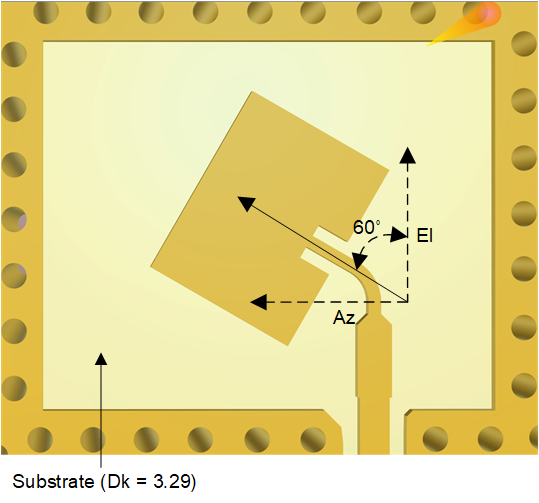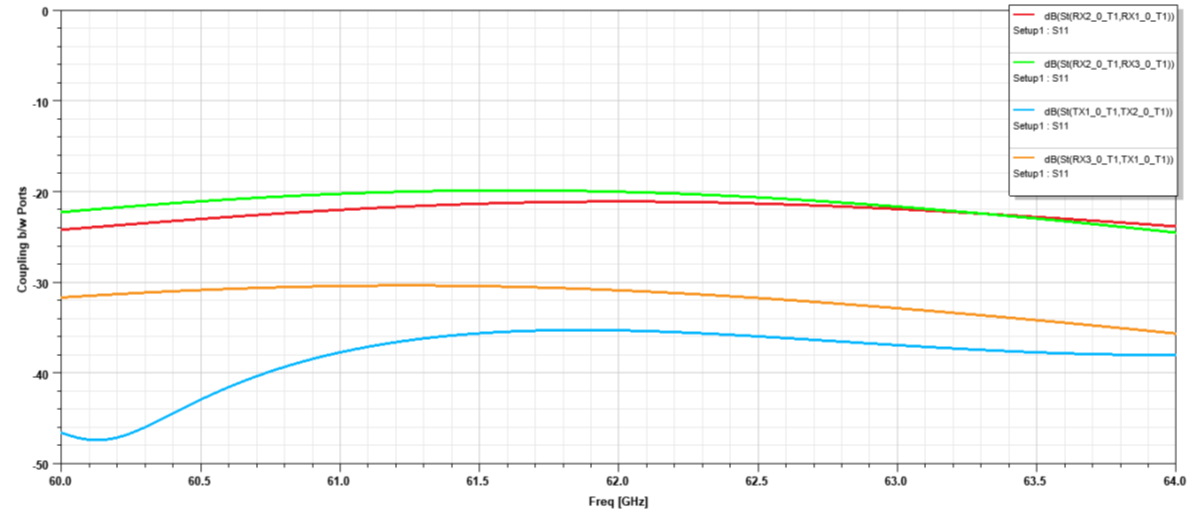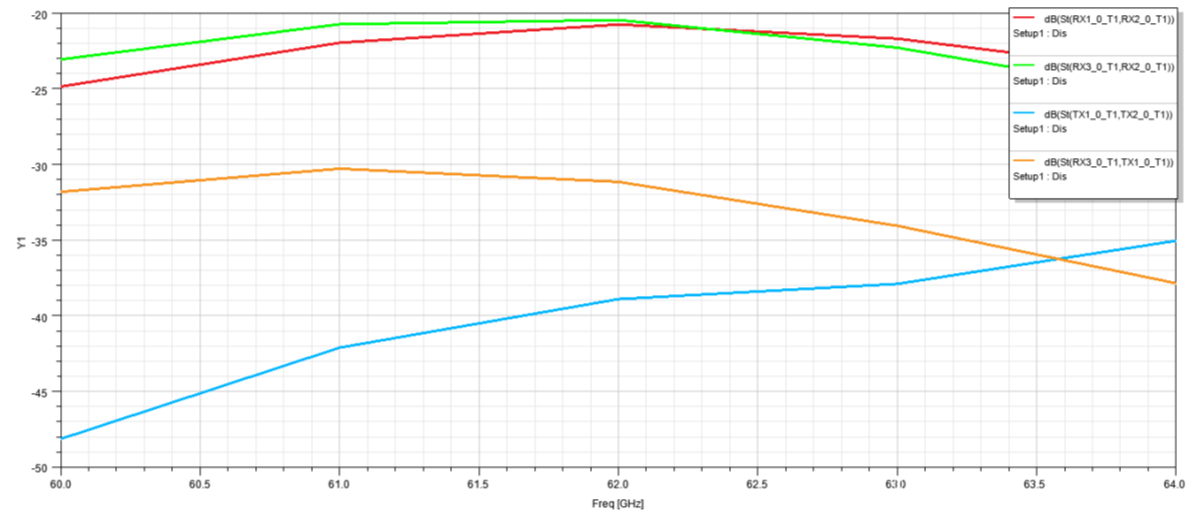TIDUFA8 November 2024
- 1
- Description
- Resources
- Features
- Applications
- 6
- 1System Description
- 2System Overview
- 3System Design Theory
- 4Link Budget
- 5Hardware, Software, Testing Requirements and Test Results
- 6Design and Documentation Support
- 7About the Authors
3.1.2 Antenna Orientation
The antenna patches are oriented at an angle of 60° with respect to the vertical axis. The orientation has been optimized considering the isolation between adjacent antennas and the azimuth radiation. More rotation from the vertical axis results in better azimuth radiation, but increases antenna coupling. A 60° rotation provides an optimum trade off between antenna coupling and azimuth radiation.

Figure 3-1 Antenna Orientation

Figure 3-2 Isolation Between Antennas - 2D Antenna

Figure 3-3 Isolation Between Antennas - 1D Antenna
Figure 3-1 shows the antenna patch orientation. The same antenna orientation has been considered for all the RX and TX antennas of both 1D and 2D antenna variants. With a larger component of power radiated along azimuth plane, the antenna yields a better performance in the azimuth plane. For the targeted application profile that includes presence detection, motion detection, vital sign monitoring etc., a better performance in the azimuth plane is anticipated.
Figure 3-2 shows the isolation between adjacent antennas, for example, RX1-RX2, RX2-RX3, RX3-TX1, and TX1-TX2. A minimum isolation of -20dB exists between the adjacent antennas given a rotation of 60°.